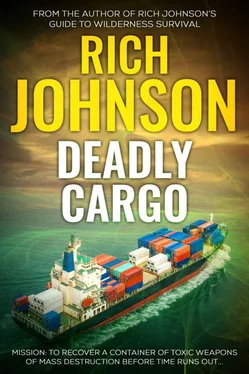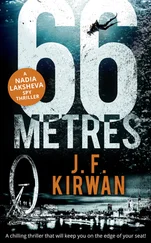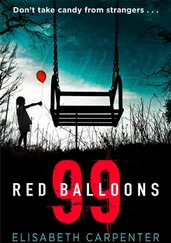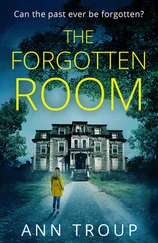Afraid the chopper crew would think they had been lured into an ambush, Josh hit the switch again on the GPS and hoped they understood. Suddenly, the sky lit up with a blinding flash, and the chopper swept the area with a HID searchlight. The high-intensity discharge beam nearly seared his eyes before he covered them. Knowing that the Taliban fighters were also blinded, he scrambled to his feet and waved, hoping the enemy didn’t see him, but that the chopper crew did.
Within seconds, he felt the downdraft, and the chopper touched down next to him. Someone grabbed him by the collar and dragged him inside, and he heard the distinctive report of .50-caliber rounds from the door gun. Without hesitation, the chopper lifted off and was airborne again. A cluster of AK47 rounds whapped the side of the fuselage as the chopper banked sharply and headed west, out of range.
With Josh still unable to see, someone strapped his seatbelt and fitted a set of headphones on his head. He straightened them over his ears, felt for the mic and moved it in front of his mouth. “I’m on.”
A familiar voice in the headphones said, “This is Curt at the farm. What’s your status?”
“Alone, sir. Unfortunately. We have a situation. A very bad situation.”
October 19th – National Intelligence Agency Headquarters, Titus, Maryland
“The cover worked flawlessly.”
At 0500 hours, three days after his extraction, the man who had been known as Staff Sergeant Josh Adams sat in a soundproof room facing a cherry wood conference table that was surrounded by seven other NIA officers. “The villagers bought into my story about being dumped by my girl, and that I was sick of the army and ready to roll over. I let them think they were sucking me in and it worked like we hoped.”
“Apparently, the backstory we created for you and your alleged girlfriend in Florida did the trick,” Curt Delamo said. At 27, Delamo seemed young for this kind of work, but his short-cropped hair was already beginning to show some age. He had been in tough positions in field ops since his recruitment to the CIA at age 21, so he earned every strand of gray. And his experience behind the lines earned him this chair as leader of Team Foxtrot, in the Special Projects Division of NIA, a black ops subdivision of the CIA. This was dark territory, and what the team did was unknown to all but a few at the top in CIA leadership. It was to this team that they turned when help was needed with deep and deadly projects that might require methods beyond what was officially sanctioned.
Curt Delamo had the ultimate responsibility to conduct this mission, embedding Josh Adams with the Special Forces in Afghanistan, posing him as a deserter and traitor in an effort to penetrate the terrorist network to learn about upcoming plots targeting the United States. Information gleaned during interrogation of a prisoner at Guantanamo had triggered this mission: to infiltrate by means of allowing Josh to be kidnapped by the Taliban.
“I’ve got to hand it to him,” Josh said, “Husam al Din did his homework. And fast. The astonishing thing is that the al-Qaeda network in the United States is not only alive and well, but also exceptionally effective. Within a couple of days, they picked up every piece of evidence NIA had planted, and thought they discovered a gold mine in me.”
“Our prisoner led us to believe that there was a Taliban unit that was hungry for just this kind of thing,” Curt continued. “The set-up went well, I have to applaud all of you,” – he made eye contact with each of the team members – “for baiting the hook so well. Josh, you played it just right. I’m glad we got you out of there alive.”
“Husam al Din was convinced that he had orchestrated the whole matter of my treason. Of course, after he took off and left me sitting in the middle of Taliban Hell, it got pretty dicey. I wish I could have gotten Groschenko out too. He’d have been a valuable asset.”
“Yeah, that would have been nice.” Susan Vellum leaned forward and propped her elbows on the table while she nervously twirled a mechanical pencil between her thumb and forefinger. Her sandy hair was pulled straight back and trapped in a short ponytail that flipped enticingly every time she moved her head. That hair style, together with her black-rimmed glasses, gave her a secretarial appearance, but every time Josh looked in her sky blue eyes he ended up thinking of anything but office work. “Groschenko designed the bug, and he probably could have helped us defuse the thing, or at least understand how to deal with it better.”
Bruce Wayonotte sat across the table from Josh. He was a burly man in his mid-forties with thinning hair and a thickening waistline, but he moved surprisingly fast. Before this most recent field op, Josh played racquetball with Bruce, and was beaten without mercy. “The thing I want to know is exactly what’s coming at us, right down to the nuts and bolts. I know it’s a biological weapon, but let’s get to the details.”
Josh reached for his glass and took a swallow of orange juice. “Okay, here’s the lowdown. Sorgei Groschenko, you all know his background as a former Soviet biological weapons scientist. He developed a bacteria that Husam al Din intends to deliver to the Port of Miami inside a shipping container.
“I don’t know exactly how the germ is to be released, but from what I gathered from Groschenko before he died, the plan is to disperse the bacteria among the dockworkers, who then carry the disease home to their families. Symptoms don’t show up for a couple of days, and then it manifests as a severe cough and is spread naturally by the spray of saliva.
“But those who become affected think it’s just a cold or the flu. Family members carry it to school, to the store, to church, anyplace they go, spreading the disease either by coughing into the air around other people, or by coughing into their hands and then touching other people. Heck, they can even leave it on the handle of a shopping cart or a gas pump or a door knob.”
“Doesn’t sound serious enough to raise any alarms,” Jack Abernathy spoke up. “Happens every flu season.”
“Exactly. Nobody will think it is anything unusual. That’s the diabolical beauty of the plan. By the time the disease matures into its most virulent form, several days will have passed, and by that time it’s too late. An infected person gets on a plane, travels to another city, visits friends, and the bug is transplanted across the country. The same scene repeats itself time and again until, within a few days, what began in Miami is in Los Angeles and New York and everyplace in between. And because it doesn’t appear to be serious at first, nobody ever raises an eyebrow.”
“So,” Chris Banes broke in, “what did Groschenko say about what happens after the germ matures?”
“You’ve heard of necrotizing fasciitis – the so-called flesh-eating bacteria?”
Susan gasped. “You’ve got to be kidding!”
Josh shook his head. “Groschenko said this is even better.”
“Better how?” Curt leaned forward, a grim look on his face.
“Better in that each generation of the bug disarms itself after four days.”
“Why design the disease to do that?” Susan asked. “Sounds as if he wanted to limit its destructive potential.”
Josh nodded as he swallowed a mouthful of orange juice. “That’s right. Ordinarily it would appear that way. But the death of the former generation is what triggers each succeeding generation to mutate, so it can’t be fought with conventional medical practices. Nobody will be able to get ahead of the problem fast enough to stop it. A person who gets the disease is dead within 72 hours after the bacteria matures and turns violent. Or not, but I’ll get to that in a minute. If the victim dies, it’ll look a lot like the progressive symptoms of necrotizing fasciitis. The patient suffers with vomiting, diarrhea, dehydration, a feeling of general malaise, weakness, muscle pain and fever.”
Читать дальше












